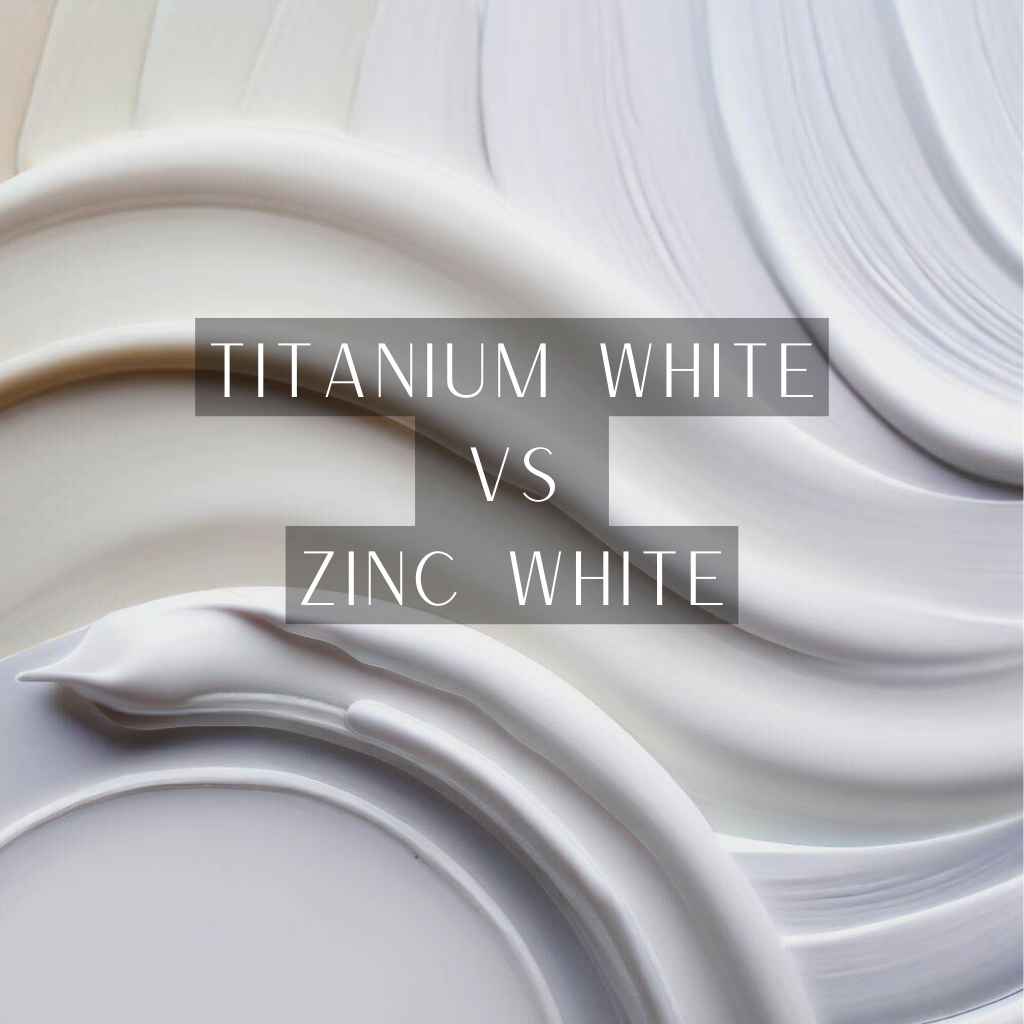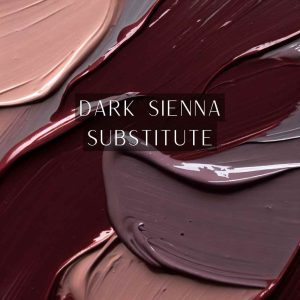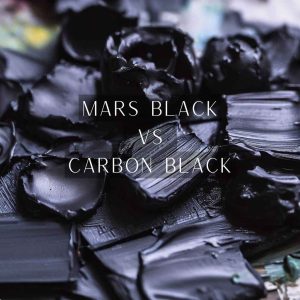Are you an artist on a perpetual quest for the perfect white pigment? Look no further, for we are about to unravel the enigmatic world of titanium white vs. zinc white.
These two contenders have long captured the imaginations of creatives, sparking debates and confounding even the most seasoned artists.
In this blog, we shall journey deep into the realm of artistic alchemy, exploring the intricacies and nuances that set these whites apart.
So, grab your brushes and palette knives as we embark on this immersive exploration of titanium white and zinc white, revealing the secrets that shall elevate your artistic endeavors to unparalleled heights.
What is Titanium White?
Titanium White is a widely used pigment known for its opaque and brilliant white appearance. Derived from titanium dioxide, it became a game-changer in the art world for its superior covering power and versatility.
Introduced in the early 20th century, Titanium White quickly gained popularity due to its impressive opacity and stability. Its emergence revolutionized the way artists approached painting, providing a reliable, vibrant, and long-lasting white pigment.
Characteristics and Properties of Titanium White-
- Opacity and Coverage: Titanium White boasts excellent opacity, making it ideal for covering darker or colored surfaces effortlessly. This attribute allows artists to create bold and impactful contrasts in their compositions.
- Drying Time: In terms of drying time, Titanium White falls in the medium range, giving artists ample time to blend and work on their artwork without rushing against the clock.
- Tinting Strength: With powerful tinting strength, Titanium White can alter the hue of other colors significantly, making it an essential asset for mixing a vast array of shades.
- Texture and Consistency: Titanium White typically possesses a smooth and buttery consistency, making it easy to work with, whether you’re using oil, acrylic, or watercolors.
What is Zinc White?
Zinc White, derived from zinc oxide, is another popular white pigment used in art. Unlike Titanium White, Zinc White is known for its transparency and subtle undertones.
Zinc White has been in use since the 18th century, although its popularity surged during the 19th century. Artists appreciated the unique characteristics that set it apart from other whites.
Characteristics and Properties of Zinc White-
- Opacity and Transparency: Zinc White exhibits remarkable transparency, making it a favorite among artists who want to achieve delicate glazing effects or build layers of depth.
- Drying Time: One of Zinc White’s advantages is its faster drying time compared to Titanium White, allowing artists to work more swiftly when time is of the essence.
- Tinting Strength: While not as strong as Titanium White, Zinc White offers a gentle tinting strength, which can add subtlety and nuance to mixed colors.
- Texture and Consistency: Zinc White typically has a smoother consistency, making it easier to blend and apply evenly on the canvas.
Comparing Titanium White and Zinc White
When it comes to selecting the perfect white pigment for your artwork, the choice often boils down to the clash of two titans: Titanium White and Zinc White. Each of these pigments possesses distinct characteristics and properties that can significantly impact your artistic expression.
Here are some of the key aspects of these two whites to help you make an informed decision-
Pigment Composition and Chemical Differences
At the core of their dissimilarities lie their pigment compositions and chemical makeup. Titanium White is derived from titanium dioxide, a naturally occurring oxide of titanium, while Zinc White originates from zinc oxide.
These distinct chemical structures contribute to variations in opacity, transparency, and tinting strength, among other factors.
Color Temperature and Undertones
The color temperature and undertones of each white pigment are equally important considerations.
Titanium White, being an opaque white, leans towards a slightly warmer hue, whereas Zinc White, with its transparent nature, tends to exhibit cooler undertones. These unique characteristics can influence the overall mood and atmosphere of your artwork.
Mixing and Blending Capabilities
When it comes to mixing and blending, Titanium White takes the lead with its potent tinting strength. It can readily alter the color of other pigments and is an excellent choice for artists seeking a broad range of colors in their palettes.
On the other hand, Zinc White’s transparency lends itself well to glazing and layering techniques, allowing artists to achieve subtle, luminous effects and build up depth in their compositions.
Lightfastness and Permanence
Considering the longevity of your artwork is essential, and the lightfastness and permanence of each white pigment play a crucial role.
Generally, both Titanium White and Zinc White are known for their stability and durability, but it’s vital to select high-quality brands to ensure your creations stand the test of time.
Suitability for Different Painting Techniques
The choice between Titanium White and Zinc White can significantly impact your preferred painting techniques. Titanium White’s opacity makes it ideal for covering dark or textured surfaces with ease.
While Zinc White’s transparency makes it an excellent candidate for glazing and layering to achieve depth and dimension. Understanding how each pigment suits your preferred technique can elevate the quality of your artwork.
Frequently Asked Questions
- Can I Use Titanium White and Zinc White Together in One Painting?”
Absolutely! Combining Titanium White and Zinc White in one painting is a common practice among artists. Using both whites offers a wide range of possibilities, from creating various shades of white to achieving subtle glazing effects. The interplay of their unique properties can add depth and harmony to your artwork, enhancing its visual appeal.
- Which White Paint is More Suitable for Oil Painting?”
Both Titanium White and Zinc White are suitable for oil painting, but the choice depends on your artistic goals. Titanium White’s opacity and versatility make it ideal for covering dark surfaces and creating vibrant colors. Zinc White’s transparency excels in glazing and layering techniques, adding luminosity and subtlety to your artwork. Consider your preferred painting style and effects desired to make an informed choice.
- Which white paint is more suitable for creating realistic skin tones in portraits?
For creating realistic skin tones in portraits, Titanium White is often more suitable due to its strong tinting strength and opacity. It allows for accurate color mixing and achieving subtle variations in skin tones, providing a solid foundation for lifelike portrayals.
- Is it possible to create a textured surface with Titanium White and Zinc White, and if so, what techniques are best for this?
Yes, it is possible to create a textured surface with Titanium White and Zinc White. Utilizing impasto techniques, artists can apply thick layers of paint with palette knives or brushes. This adds dimension and texture to the artwork, creating an engaging tactile experience for viewers.
- Can I use Titanium White and Zinc White as primers or underpaintings for my oil or acrylic paintings?
Yes, both Titanium White and Zinc White can be used as primers or underpaintings for oil and acrylic paintings. Titanium White’s opacity provides a solid base, while Zinc White’s transparency allows for delicate layers to create depth and luminosity in the final artwork.
- Which white paint is more suitable for achieving a soft, hazy, or ethereal look in landscapes or atmospheric scenes?
Zinc White is more suitable for achieving a soft, hazy, or ethereal look in landscapes or atmospheric scenes. It’s transparency and cool undertones lend a subtle and dreamy quality, ideal for capturing the softness of distant horizons, misty mornings, and ethereal light effects.
Wrapping Up
As we put the final brushstrokes on our exploration of titanium white vs zinc white, the veil is lifted on the captivating world of white pigments in art.
Our journey has been a thrilling pursuit of clarity, where we have unraveled the mysteries that surround these two titans. From the allure of titanium white’s powerful tinting strength to the ethereal charm of zinc white’s transparency, we have witnessed their unique attributes that fuel artistic expression.
So, dear artists, with your newfound knowledge, embark on your creative odyssey with confidence, for the world of titanium white and zinc white awaits your imaginative touch!





Your writing skills are amazing! I really love it! Can you review my website https://www.gdiz.eu.org and maybe you can share tour thought about mine?